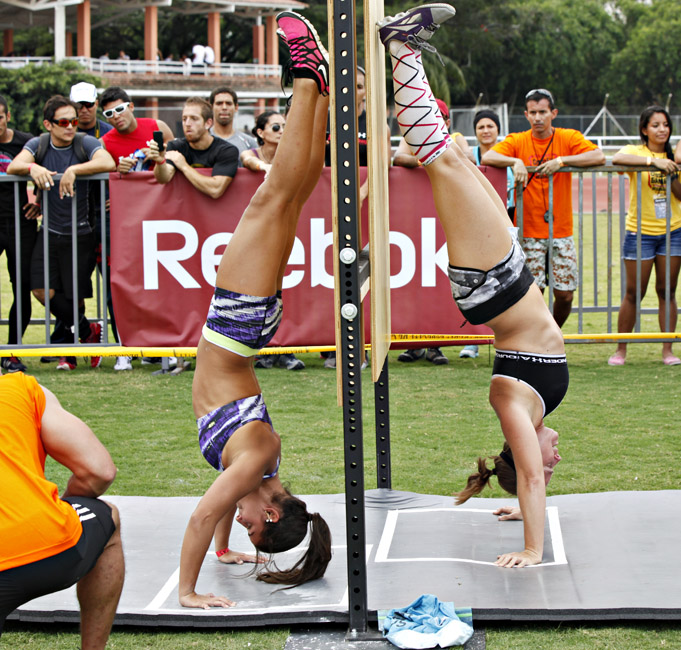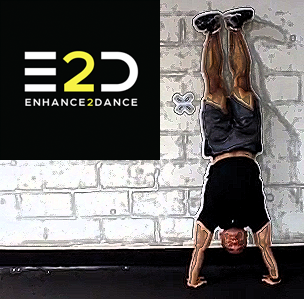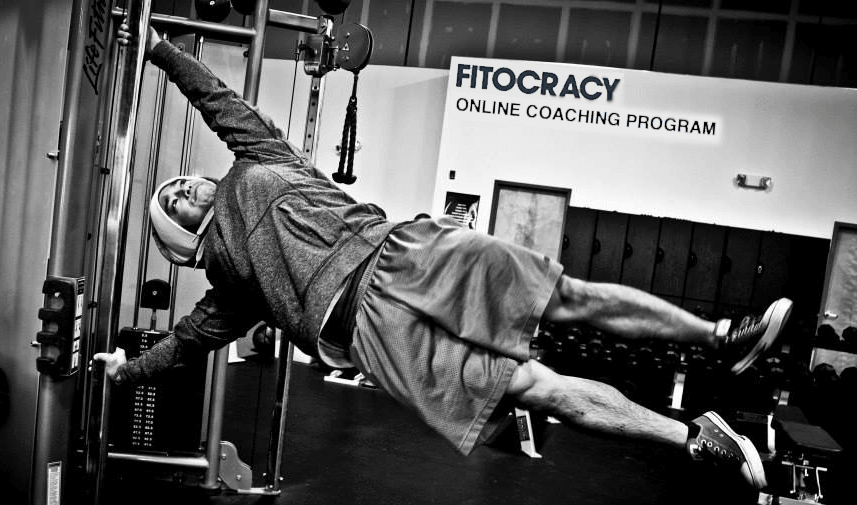Handstand exercises were something of a work of art growing up. Prior to the internet, I can only recall watching old(er) kung fu and martial arts films, along with Only the Strong – capoeira’s entrance into the U.S. mainstream. For what it’s worth, it was amazing at the time.
[youtube=https://www.youtube.com/watch?v=qj-VHOp2myk]
Today, I’m not going to announce my entry into a cool martial arts movie – because that would be amazing and fulfill one of my lifelong goals – but rather talk about handstands.
Now, with the CrossFit games coming to an end, there has been much stipulation about handstands, kipping handstands, and the overhead athlete.

What isn’t talked about is what the proper form for a handstand, along with how to best train this exercise. Yes, you can train it, much like many other exercises.
Much like the push-up, you can do a handstand incorrectly.
With this in mind, I introduce to you the handstand hold with exhalation:
The handstand hold with exhalation goes to involve the relaxing of specific muscles, along with the proprioceptive feedback of other muscles working simultaneously.
Whether you’re a dancer, gymnast, budding parkour athlete, or just want to own a handstand for your own repertoire, this is a great exercise to add in for several reasons.
- It is a great upper body and shoulder exercise.
- By association is also a great abdominal exercise.
- It teaches total body tension when performed correctly.
- It teaches total body proprioception – because you’re upside down!
- You now have an awesome party trick to show everyone – when you master it that is …
Troubleshooting the Exercise
I believe it was Alwyn Cosgrove who taught the idea of utilizing self-limiting exercises to aid in progression for an individual. The handstand hold is a great example of this, as you’ll be able to tell right away if you are performing the exercise incorrectly from the get-go. Learning to brace your abdominals (via contracting your obliques, and posterior tilting) can go a long way to helping you learn how this exercise works.
By focusing on the breathing aspect of the exercise, you can begin to appreciate the smaller, yet important stabilizers found within the vertebra of the spine, along with the respiratory muscles of the abdominals (internal obliques, external obliques, and transverse abdomin-is), not to mention the diaphragm as well.
The reason I want to magnify the breathing aspect is to take tension away from other major movers that may be synergistically dominating, or working too much to override the exercise – the upper traps, erector spine of the lower back, among other muscles.
Further, if done correctly, you want to able to feel your shoulder blades moving as you perform this exercise. As a closed chain vertical pushing exercise, you want to be able to have a healthy, upward scapular rotation, as opposed to utilizing your upper traps and deltoids to the extent that they overrun the exercise itself.
So, instructions for this exercise include:
- Holding the “top” position of this exercise, relaxing your cervical neck so you look horizontally instead of vertically towards the ground underneath you. This will aim to not strictly use our upper traps during the handstand.
- Perform posterior tilt by “tucking” your pelvis in place – this is also referred to as a hollowing of the body, similar to what gymnasts use in their practice as well.
- Breathing in through your nose for a 5 second count.
- Exhaling through your diaphragm for a 5 second count, in which you should feel the “sides” of your stomach or abdominal wall contract – these are your obliques!
- Progressing through this exercise involves inhaling at the top of the exercise, and then lowering down, and then exhaling as you move upwards and away from the ground.
Give this a try before you start a session, or add it in if you are looking to increase your proprioceptive awareness for your handstands!
If you’re interested in more instruction and help with your bodyweight training, look no further – my Fitocracy coaching group has 5 spots left as of today, Tuesday July 29, 2014!
Sign up here before spots fill up fast!
As always,
Keep it funky.
MA


